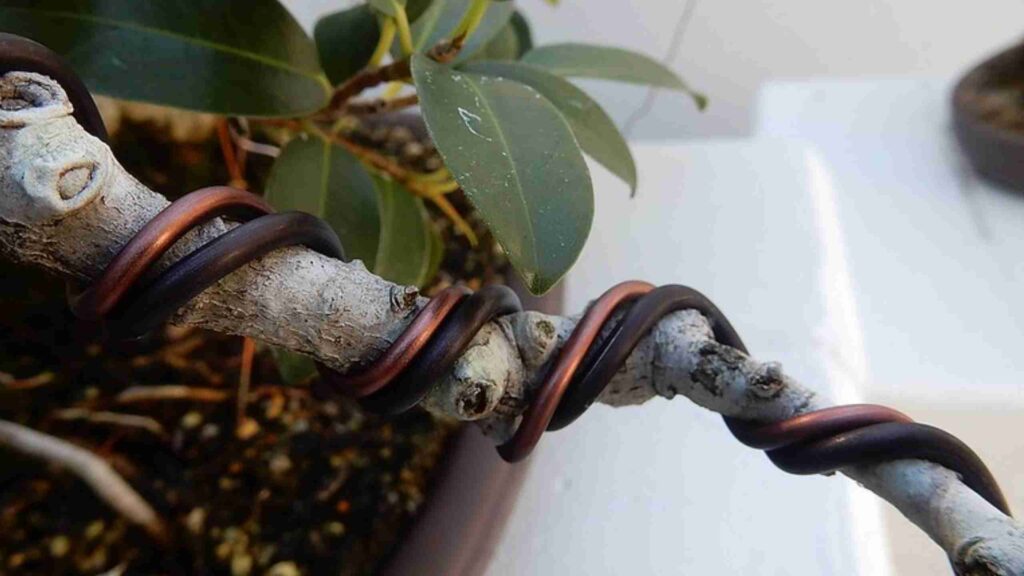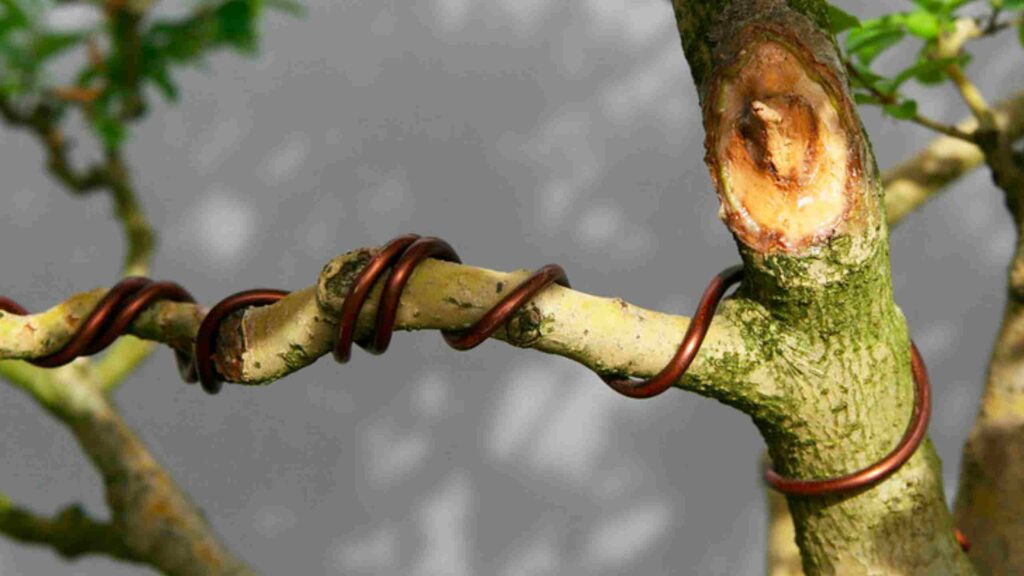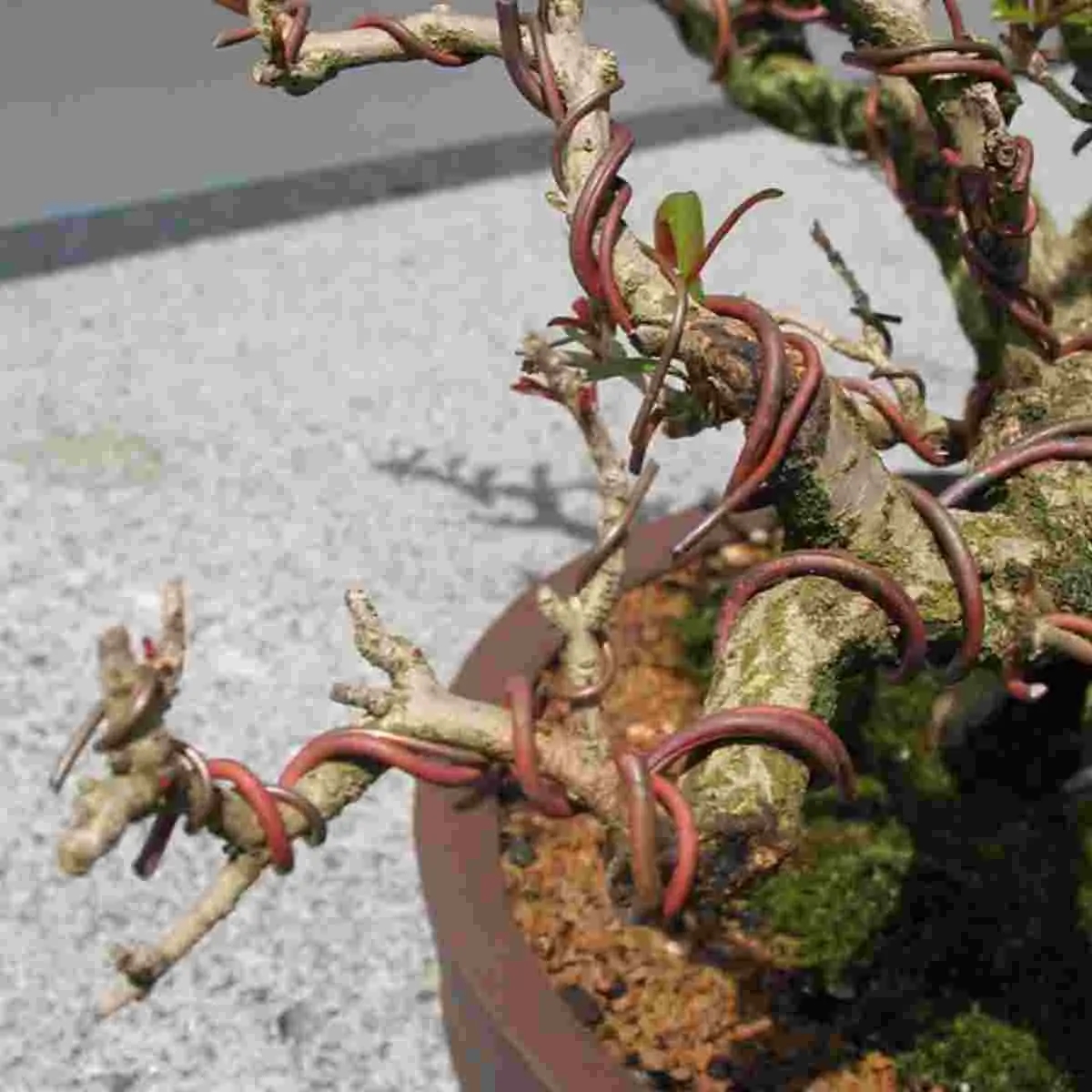Wiring a bonsai tree is an essential skill for every bonsai grower. Though it may seem intimidating, wiring can actually be really easy, as long as you know what you’re doing. In this guide, I will show you how to wire a bonsai tree.
You just bought your new bonsai tree, or you have a young plant that has started to grow. Now it’s time to take care of it and train the tree through wiring.
Wiring a bonsai tree is an art and with time and practice, you can master that.
If you are wondering how to wire a bonsai tree in order to shape it, this guide will show you the path. But it does require some patience and experience since you will be working with small branches.
What is Bonsai Wiring
Wiring a bonsai tree simply means putting wires around the branches and trunk of a bonsai to give it the desired shape.
The process of wiring a bonsai tree is an essential one. Without it, you would never have been able to create the shape that you wanted your bonsai tree to have.
If you are a beginner, wiring seems to be a bit of a challenge.
Pros and Cons of Bonsai Wiring
The main benefit of bonsai wiring is that you can force a branch to grow in any direction you want.
Pros:
- You can force your tree to grow into any shape. Can control where new buds will appear on your bonsai tree. Your branches will be very strong.
- It takes years to get results (if ever). It’s difficult to use on older trees or large trees.
Different Kinds of Bonsai Wires
There are several different kinds of bonsai wire available to choose from.
They all serve the same purpose: keep the branches of your bonsai tree in place and make it grow into the shape you want. Whichever one you choose will depend on your preference and which one you can afford.
Anodized Aluminum:
Anodized aluminum wires are one of the best all-around wires for bonsai. These wires are soft enough to bend easily and form tight curves, but tough enough to endure years of use without breaking.
Because they are relatively expensive, they are usually used on smaller branches.
But the problem with aluminum wires is they will eventually lose their elasticity over time. If you use aluminum wires long enough without taking them off your bonsai tree, they’ll eventually become loose.
Anodizes aluminum wires are best for deciduous trees.

Annealed Copper:
The second most common wire is copper, which has a slightly thicker diameter (0.024″) than aluminum. However, it is much more rigid, and will not lose its shape like a smaller gauge aluminum wire.
Copper wire is a traditional material for bonsai training. Annealed copper wire is hard and is excellent to use on thicker trunks.
It is available in different diameters and can be used for all types of tree branches, including thick trunks. When used on small branches, the wire must be applied with care not to damage the bark. 7 and 8 mm wire are most suitable.
Annealed copper wires are best for conifers and pine trees.
Most experts use plastic-coated wires because they are easy to remove and do the least damage to the plant.
Bonsai wire is not used to support a plant. It is only used to shape the branches.
Wire type will determine how fast you can achieve the desired shape, but you should always keep in mind to go slow.
You may rush things, but this will cause anchor wounds that will take time to heal, and may even kill small branches.
How To Wire A Bonsai Tree:

Bonsai is very sensitive to wires and can get easily damaged by improper techniques. So it is important for you to know how to do it correctly the first time.
Wiring a bonsai tree is not rocket science, but there are some techniques that need to be employed.
The basic principle behind the bonsai wiring technique is that you shape the tree by applying tension to the branch on a daily basis.
First of all, you’ll need to decide if you want to use aluminum or copper wire for your bonsai trees. Many beginners choose aluminum because it’s so easy to work with.
When your branches develop good strength, aluminum wire can over time cut into your tree’s bark and cause it undue stress and damage.
If you plan on keeping your tree for a long time (many years), I recommend using copper instead. It won’t damage the trunk of your tree in the same way that aluminum wire can.
Wiring The Bonsai Trunk:
Wire a bonsai’s trunk for aesthetic appeal. Choose a wire that is one-third the thickness of the tree’s trunk diameter.
Then, anchor one end of the wire to the soil and begin to coil your curves around the trunk. Make your curves narrower as you move up the trunk.
Wiring The Bonsai Branches:
When wiring bonsai trees, starting from the trunk and working outwards is a good strategy.
Bending two nearby branches with one wire can sometimes work, and you may need to experiment with wires if you want to accomplish this.
Wire Sizing:
The bonsai wires come in different gauges; the lower the gauge number, the thicker the diameter of the wire. The higher gauge numbers are thinner and lighter-weight wires.
In Japanese, 0 gauge (zero) gauge is as thick as 1 millimeter and 20 gauge, which is a very thin wire with 0.34-millimeter diameters.
Why is It Important to Wire Train Your Bonsai Tree?
Wiring a Bonsai tree can be both a crucial and an artistic technique used in the art of Bonsai. Bonsai artists will push, pull, and manipulate their trees’ branches in order to create curved lines and curves.
It’s an important process for many beginners in bonsai, and it has its own set of safety precautions you need to follow.
When to Wire a Bonsai Tree
There aren’t any specific rules for when to start training your bonsai. A good rule of thumb is to wait until the tree has developed it root system completely and begins to grow its trunk.
This can take years, depending on the type of tree you’re working with.
When beginning wire training for a bonsai, it is important to make sure that the plant is ready. Wire training a weakened or immature plant can cause permanent damage and ruin.
How Long Do You Leave Wire on a Bonsai Tree
It’s hard to say how long you should leave the wire on a bonsai tree because it’s largely dependent on your bonsai.
It usually takes a few months, though, to allow the branches time to set into their new positions.
A good rule of thumb is to leave the wires for at least two or three months. This will give your tree time to grow around the wire.
As the bonsai tree ages, its trunk and branches continue to thicken, and the wire begins to bite into the bark. Cut the wires before this happens.
Conclusion:
When I first started wiring my trees, I was completely overwhelmed. I didn’t know where to start and had no idea what I was doing. So if you’re like me and don’t know much about wiring, hopefully, this tutorial helped clear things up for you.
